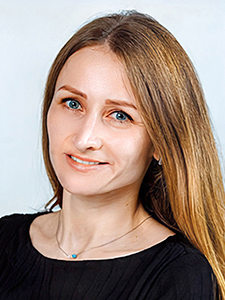- Who We Are
- Updates & News
- Standards
- Software Tools
- Network Studies
- Community Forums
- Education
- New To OHDSI?
- Community Calls
- Past Events
- Workgroups
- Tutorials
- 2025 ‘Our Journey’ Annual Report
- Current Events
- Support & Sponsorship
- 2025 Global Symposium
- 2025 APAC Symposium
- 2026 Global Symposium
- Github
- YouTube
- X/Twitter
- Newsletters
OHDSI 2024 Tutorials
Morning Session (8 am - 12 pm ET) - Regency Ballroom DE
An Introduction to the Journey from Data to Evidence Using OHDSI
The journey from data to evidence can be challenging alone but is greatly enabled through community collaboration. In this half-day tutorial, we will introduce newcomers to OHDSI. Specifically, about the tools, practices, and open-science approach to evidence generation that the OHDSI community has developed and evolved over the past decade.
Faculty will highlight the ways community individuals can participate as well as receive value from the community’s outputs. The course will include topics such as open community data standards – including the OMOP Common Data Model and OHDSI Standardized Vocabularies, open-source analytic tools – including HADES and ATLAS, and the conduct of open network studies for methodological research & clinical applications. Location: Regency Ballroom DE, Main Level
Faculty

Daniel Prieto-Alhambra
University of Oxford; Erasmus M.C.

Jenna Reps
Janssen Research & Development

Mui Van Zandt
IQVIA

Erica Voss
Janssen Research & Development

Linying Zhang
Washington University in St. Louis
Afternoon Session (1 pm - 5 pm ET) - Regency Ballroom
Conducting 'Off-The-Shelf' Characterization Studies Using DARWIN EU® Tools and the OMOP CDM
The European Medicines Agency (EMA) and the European Medicines Regulatory Network established the Data Analysis and Real-World Interrogation Network (DARWIN EU®) coordination center to provide timely and reliable evidence on the use, safety and effectiveness of medicines for human use, including vaccines, from real world healthcare databases across the European Union (EU). The DARWIN EU team has established a data network standardized to the OMOP CDM and has developed a series of open-source analytics tools that run atop the OMOP CDM to conduct characterization studies for
disease natural history, drug utilization, and treatment patterns.
In this tutorial, students will learn from leaders in the DARWIN EU team about how to execute characterization analyses against their OMOP CDM instance using DARWIN EU packages, including how to define inputs to the standardized analytics and how to interpret standardized results. Students will also learn how DARWIN EU tools relate to and connect with OHDSI’s
broader open-source analytics ecosystem. Location: Regency Ballroom D, Main Level
Faculty

Edward Burn
University of Oxford

Daniel Prieto-Alhambra
University of Oxford; Erasmus M.C.

Martí Català Sabaté
University of Oxford

Maarten van Kessel
Erasmus M.C.
Developing and Evaluating Your Extract, Transform, Load (ETL) Process to the OMOP Common Data Model
The OMOP Common Data Model has become one of the most widely used international health data standards. Standardizing data to the OMOP CDM requires development of an extract, transform, load (ETL) procedure that converts source data into the CDM structure while observing the appropriate conventions and adhering to the OHDSI standardized vocabularies. The OHDSI community maintains and provides resources for the OMOP CDM standard, Standardized Vocabularies, and THEMIS ETL conventions, and has developed a series of open-source analytic tools to support both ETL development and evaluation (including WhiteRabbit, CDMInspection, and DataQualityDashboard).
In this tutorial, students will learn about the tools and practices developed by the OHDSI community to support the journey to establish and maintain an ETL to standardize your data to OMOP CDM and enable standardized evidence generation across a data network. Location: Regency Ballroom E, Main Level
Faculty

Clair Blacketer
Janssen Research & Development

Evannette Burrows
Janssen Research & Development

Melanie Philofsky
Odysseus Data Services, Inc.

Katy Sadowski
Boehringer Ingelheim
So, You Think You Want To Run an OHDSI Network Study?
Reliable real-world evidence generation requires appropriate analyses applied to data sources fit-for-purpose for the research question of interest. The OHDSI community has developed open-source standardized analytics tools that can be executed across a network of OMOP CDM databases and processes to facilitate collaborations between researchers throughout the evidence generation process from design through implementation and dissemination.
In this tutorial, students will learn about the steps along the journey to turn your research question into reliable evidence and how to lead an OHDSI network study. Location: Regency Ballroom C, Main Level
Faculty

Yong Chen
University of Pennsylvania

Ben Martin
Johns Hopkins University

Nicole Pratt
University of South Australia

Anthony Sena
Janssen Research & Development

Andrew Williams
Tufts University

Seng Chan You
Yonsei University Health System
Using the OHDSI Standardized Vocabularies for Research
The OHDSI Standardized Vocabularies serves as a foundation to data standardization process within the OMOP CDM. It also can be tremendously useful tool for enabling the appropriate design of analyses that can be executed across a network of databases. A core component within essentially all analysis is the specification of phenotypes and associated code lists to represent exposures, outcomes, and other features.
In this tutorial, students will learn how to take advantage of the OHDSI standardized vocabularies as an analytic tool to support your research, including searching for relevant clinical concepts, navigating concept relationships, creating Conceptsets and understanding source codes that map within these expressions. Students will also learn where the OHDSI standardized vocabularies is used throughout OHDSI’s standardized analytic tools. Location: Regency Ballroom F, Main Level
Faculty

Anna Ostropolets
Janssen Research & Development

Vlad Korsik
Odysseus Data Services, Inc.

Azza Shoaibi
Janssen Research & Development

Polina Talapova
SciForce

Oleg Zhuk
Odysseus Data Services, Inc.
